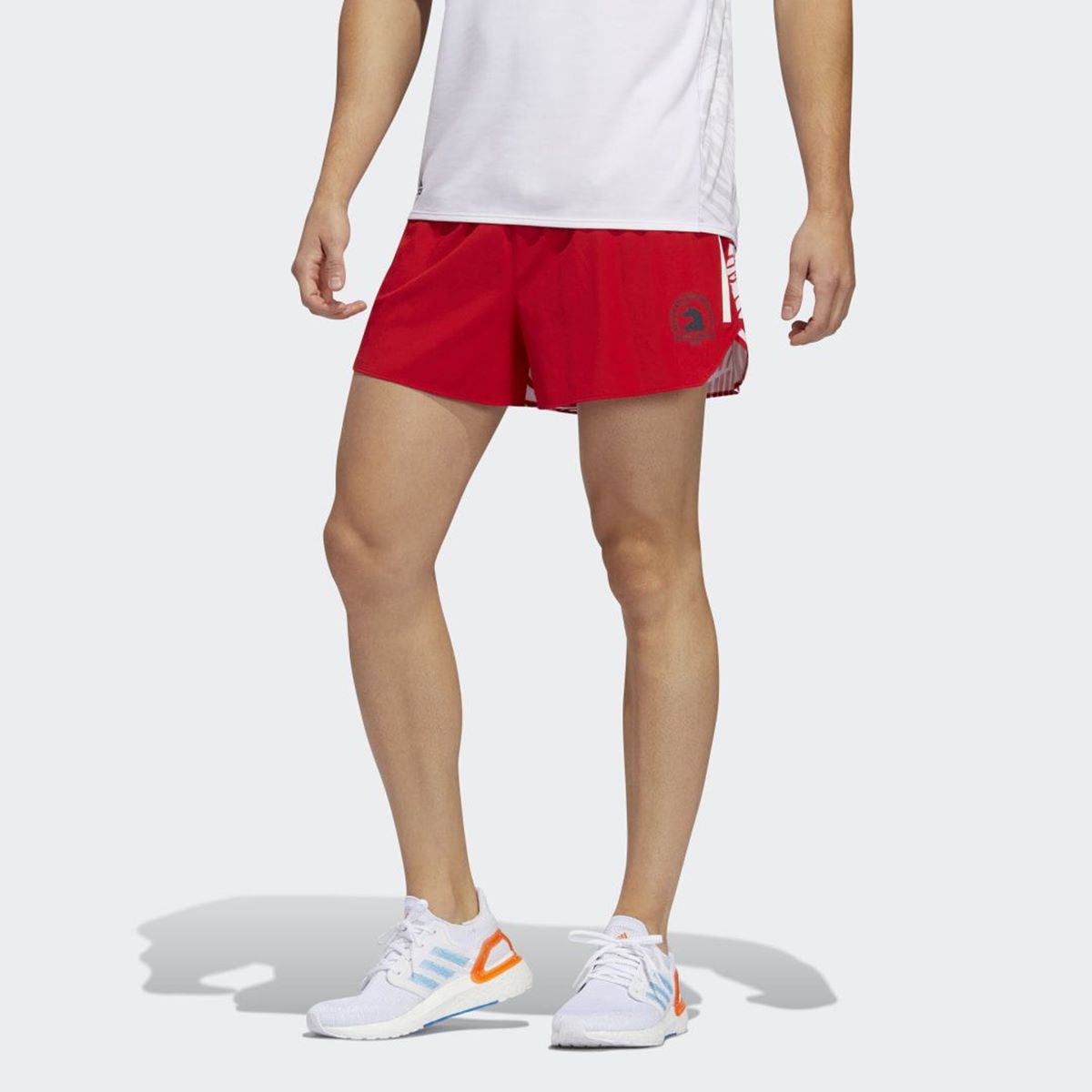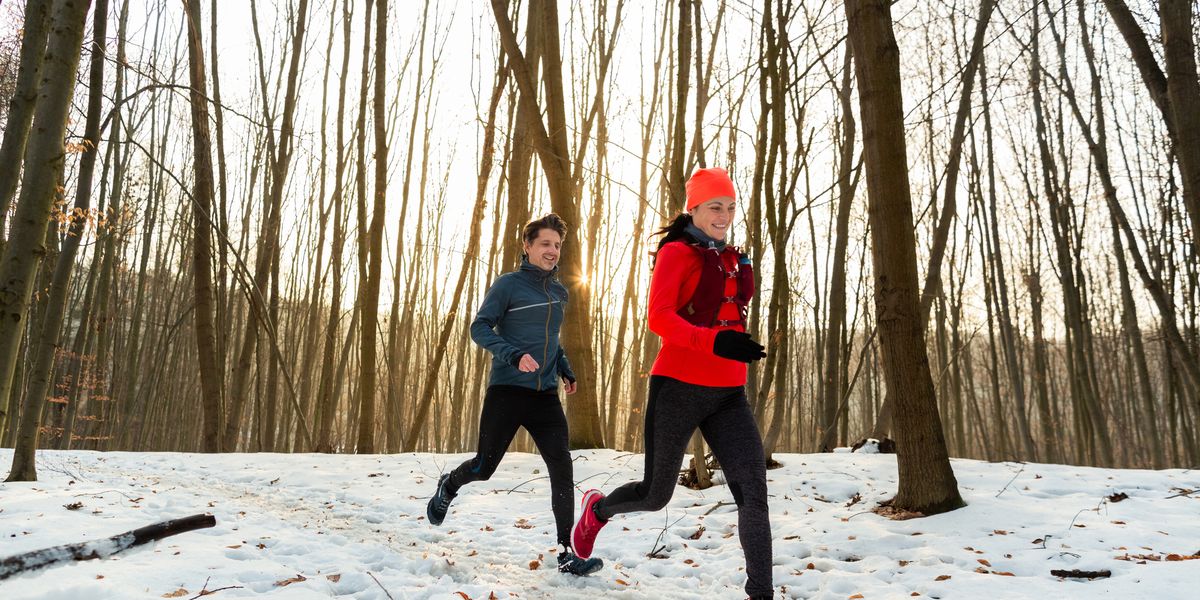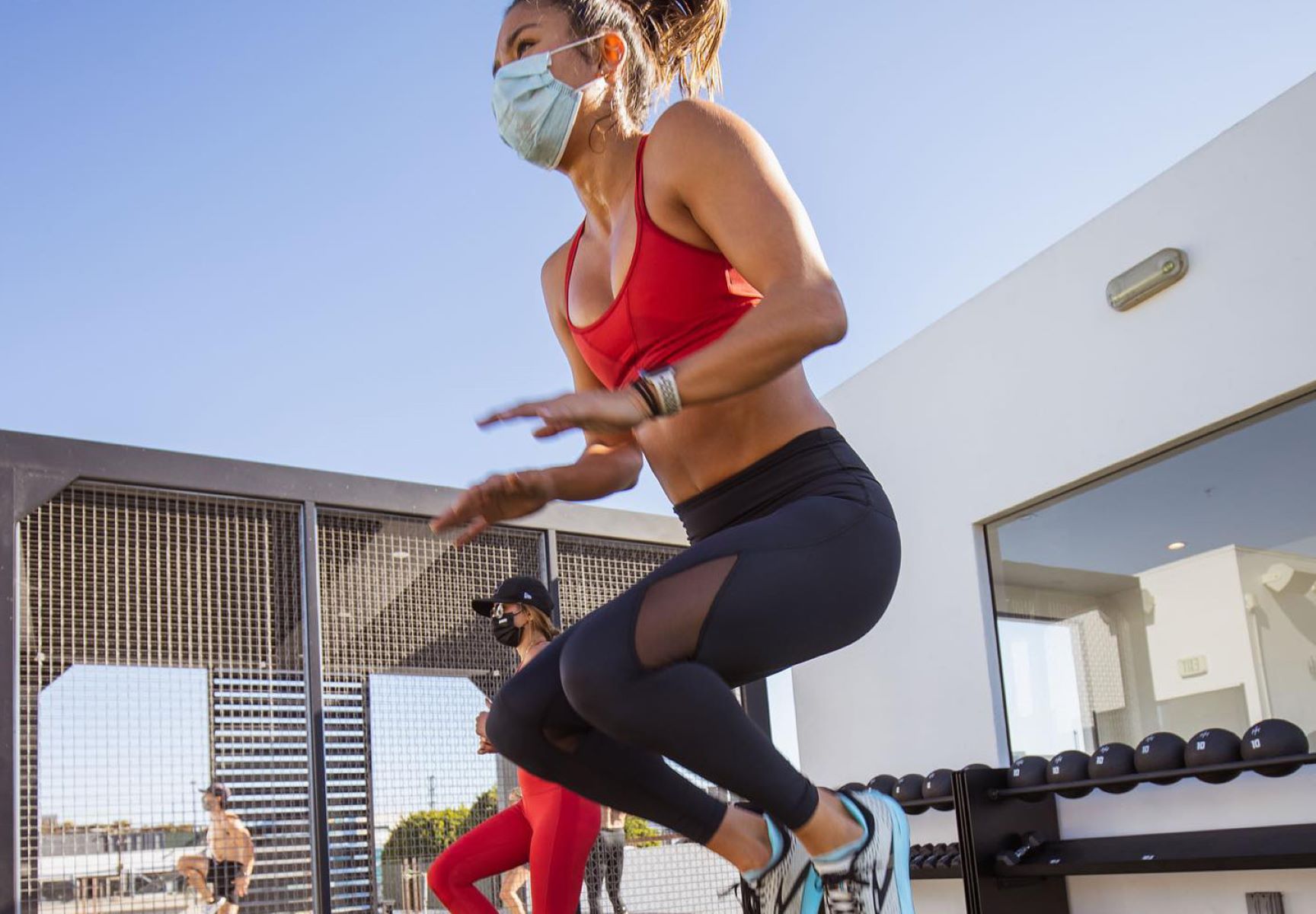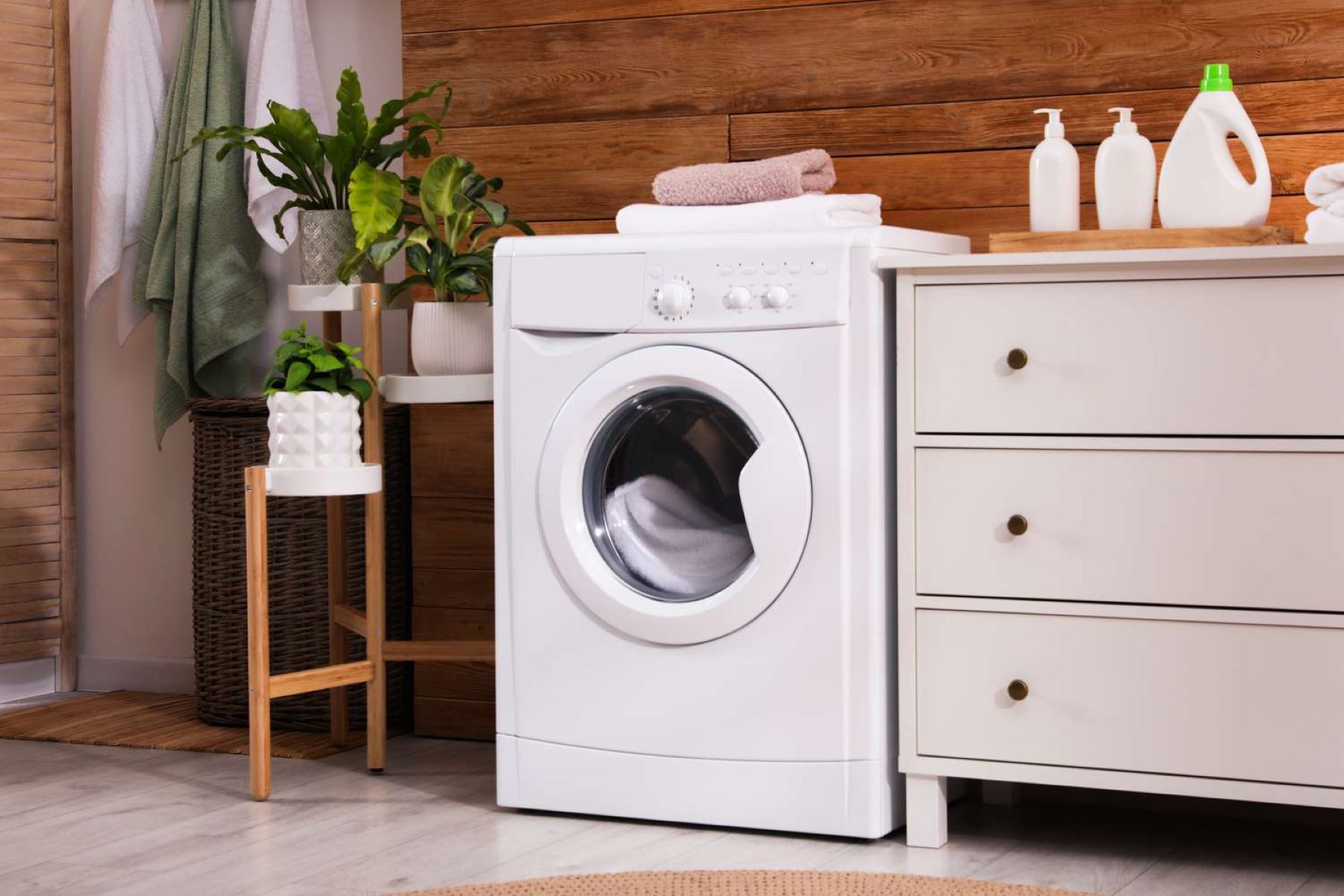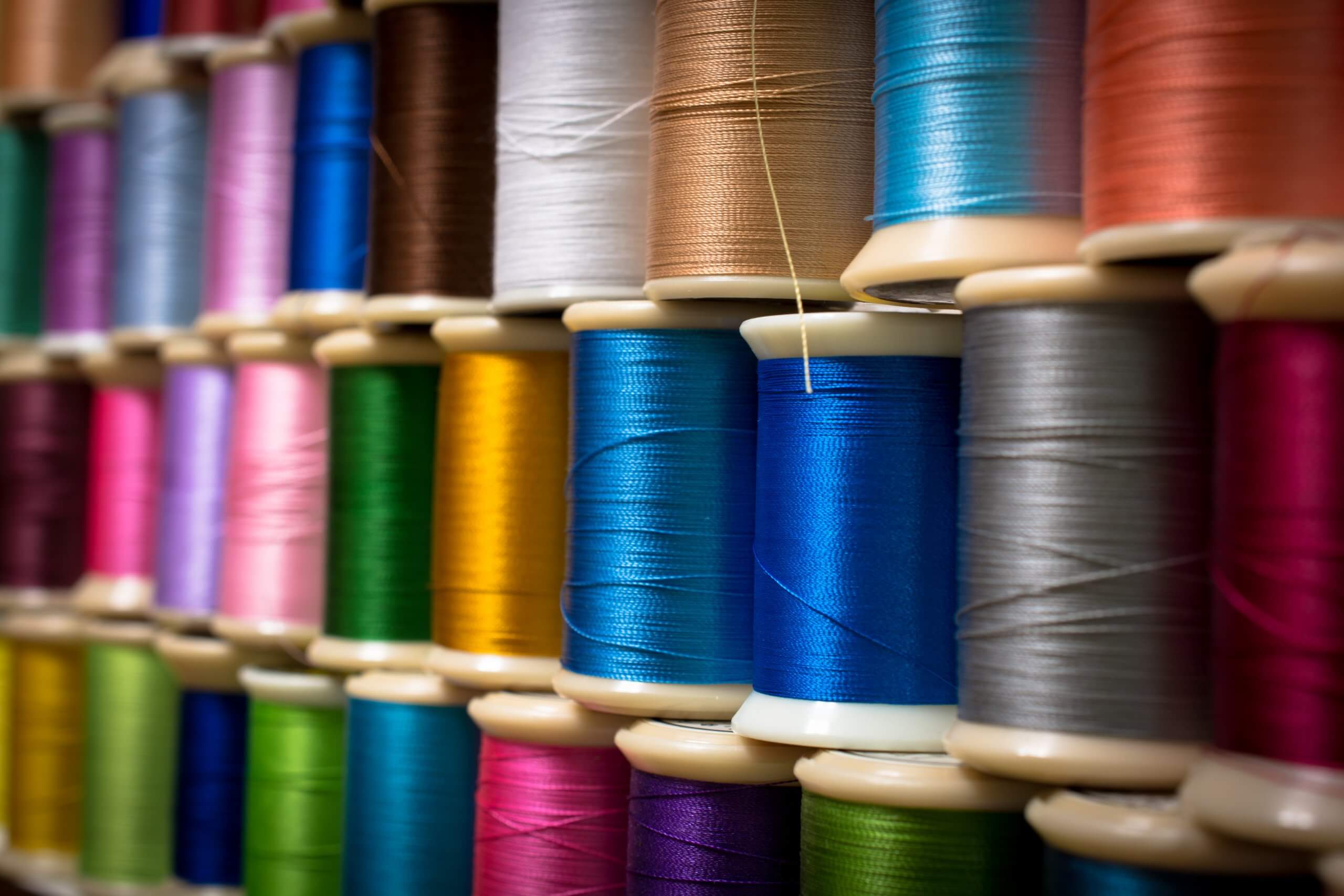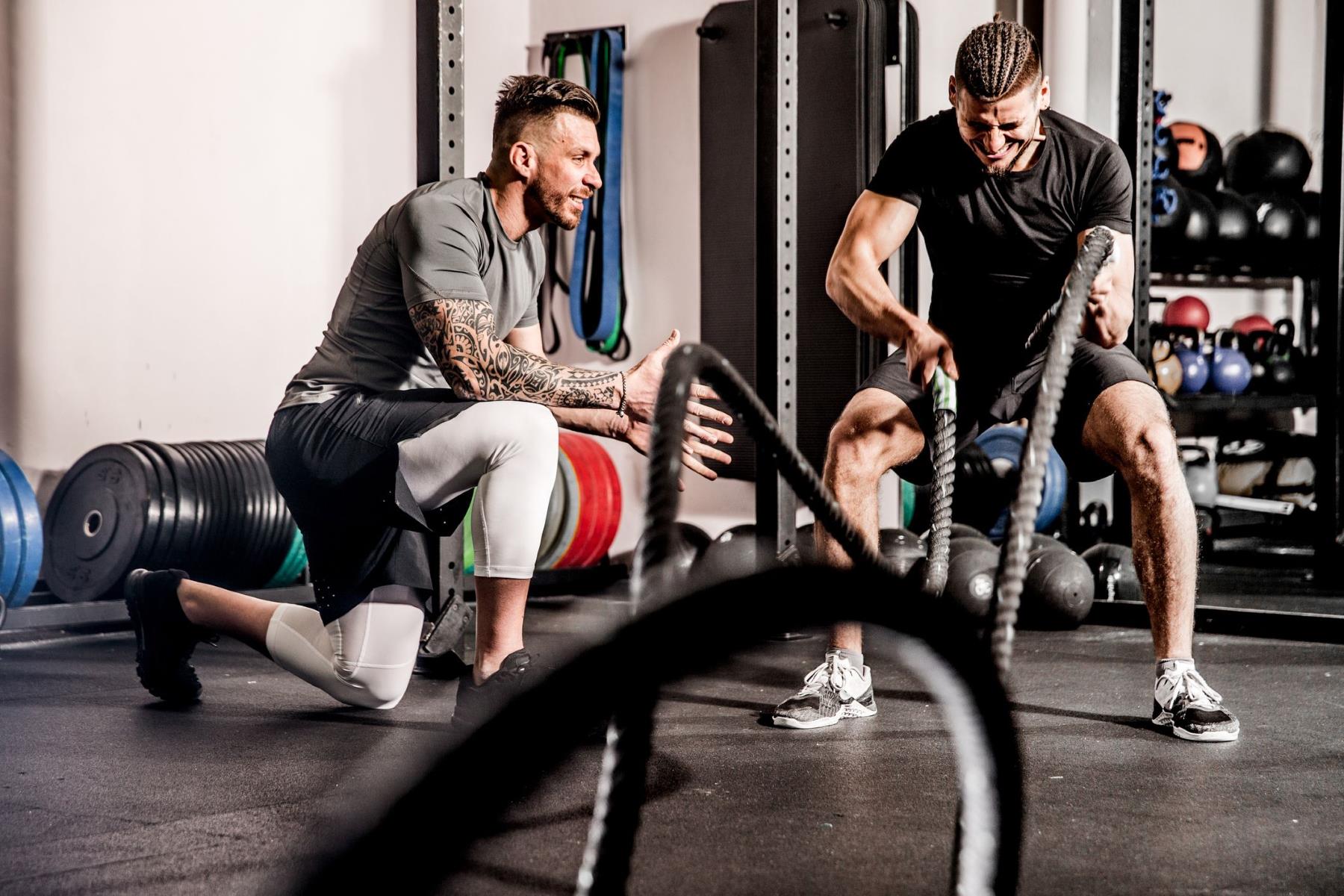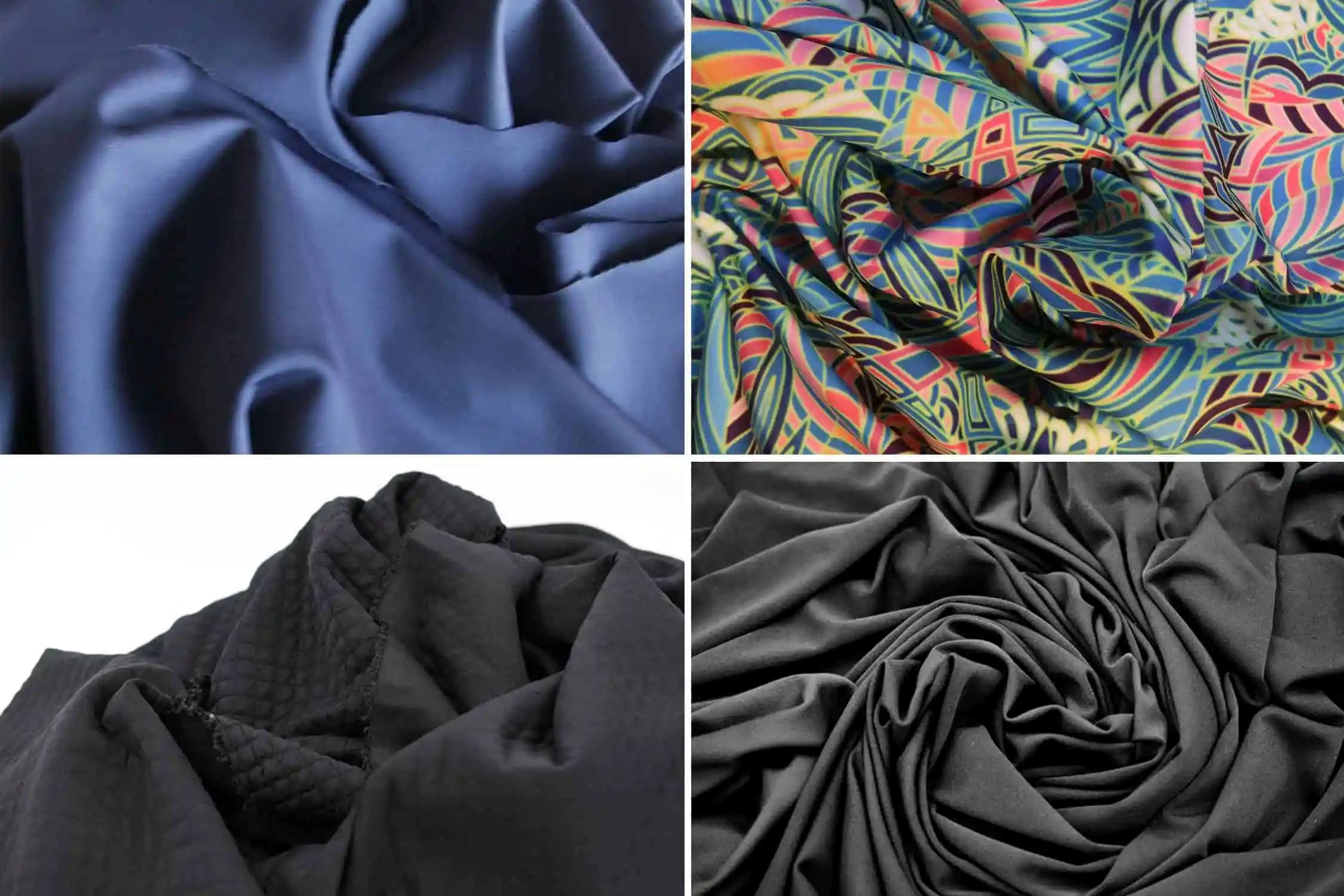

Featured
What Fabric Is Used For Activewear
Modified: May 22, 2024
Looking for featured activewear? Discover the best fabric options for your workout clothes to ensure comfort and performance in every move.
Introduction
When it comes to activewear, the right fabric can make all the difference. Whether you’re hitting the gym, going for a run, or practicing yoga, the fabric of your workout clothes can affect your performance, comfort, and overall experience. But with so many options available, how do you choose the right fabric for your activewear?
Activewear fabrics need to be comfortable, durable, and able to accommodate the demands of various physical activities. They should have moisture-wicking properties to keep you dry, breathability for optimal airflow, and stretchability for unrestricted movement. Moreover, the fabric should be able to withstand regular wear and tear without losing its shape or functionality.
In this article, we will explore the importance of fabric in activewear and discuss the factors to consider when choosing the right fabric. Additionally, we will delve into the world of common fabrics used in activewear and highlight the performance properties that make them suitable for athletic activities.
Choosing the right fabric for your activewear can greatly enhance your exercise routine. So, let’s dive into this comprehensive guide to discover the best fabrics for optimal comfort and performance during your workouts.
Importance of Fabric in Activewear
The choice of fabric plays a crucial role in the performance and functionality of activewear. Whether you’re engaging in high-intensity workouts or low-impact activities, the right fabric can make a significant difference in your overall experience. Here are a few reasons why fabric is important in activewear:
- Comfort: Comfort is key when it comes to activewear. The fabric should feel soft and smooth against the skin, allowing for unhindered movement and minimizing irritation or chafing. It should also provide a comfortable level of compression and support where needed.
- Moisture-Wicking: During exercise, our bodies produce sweat to cool down. Moisture-wicking fabrics draw moisture away from the skin to the outer surface of the fabric, where it evaporates quickly. This helps to keep you dry and comfortable throughout your workout, preventing chills and discomfort.
- Breathability: Activewear fabric should be breathable, allowing air to circulate and regulate body temperature. This helps to prevent overheating and excessive sweating during intense physical activities. Fabrics like mesh, bamboo, and certain synthetic blends are known for their breathability.
- Stretchability: Flexibility and stretchability are crucial in activewear, as they allow for unrestricted movement. The fabric should have enough stretch to accommodate a wide range of motion, ensuring that you can bend, stretch, and perform exercises without feeling restricted.
- Durability: Activewear fabrics should be durable enough to withstand the demands of regular workouts and frequent washing. They should maintain their shape, color, and performance properties, even after countless wears and washes.
By paying attention to the fabric used in your activewear, you can prioritize comfort, performance, and longevity. Investing in high-quality fabrics will not only enhance your overall experience but also ensure that your activewear lasts longer, making it a worthwhile investment.
Factors to Consider When Choosing Activewear Fabric
Choosing the right fabric for your activewear is essential for optimal performance and comfort. With a wide range of options available, it can be overwhelming to know which fabric to choose. Here are some key factors to consider when selecting activewear fabric:
- Sweat-wicking: Sweat-wicking fabrics, such as polyester and nylon blends, are designed to pull moisture away from the skin and onto the outer surface of the fabric, where it evaporates. This helps to keep you dry and comfortable during your workout, preventing the fabric from becoming heavy or clingy.
- Breathability: Look for fabrics that offer good breathability, allowing air to circulate and regulate body temperature. Mesh, bamboo, and lightweight synthetic blends are known for their breathability, helping to keep you cool and preventing overheating during intense workouts.
- Stretch and flexibility: Activewear fabric should have enough stretch and flexibility to allow for a wide range of motion. Look for fabrics that have a high percentage of elastane or spandex, as they provide excellent stretch and recovery, allowing you to move freely without feeling restricted.
- Comfort: Consider the comfort of the fabric against your skin. Look for soft and smooth materials that feel comfortable to touch. Fabrics with flatlock seams can also help to minimize irritation and chafing during repetitive movements.
- Durability: Activewear fabric should be durable enough to withstand the rigors of frequent workouts and repeated washing. Look for fabrics with good tensile strength that can withstand stretching and pulling without losing their shape or integrity. Additionally, consider the fabric’s resistance to pilling, fading, and shrinkage.
- Odor control: Some activewear fabrics have odor-control properties that help to inhibit the growth of odor-causing bacteria. Look for fabrics treated with antimicrobial finishes or made from natural fibers like bamboo, which have natural anti-odor properties.
Consider these factors when choosing your activewear fabric to ensure that you select a fabric that aligns with your needs and preferences. It’s also a good idea to try on different fabrics and styles to see which ones feel the most comfortable and functional for your specific workouts.
Common Fabrics Used in Activewear
When it comes to activewear, there is a wide variety of fabrics to choose from, each with its own unique properties and benefits. Here are some of the most common fabrics used in activewear:
- Polyester: Polyester is one of the most popular choices for activewear due to its excellent moisture-wicking capabilities. It pulls sweat away from the skin, keeping you dry and comfortable during your workouts. Polyester is also known for its durability and ability to retain its shape, making it ideal for high-intensity activities.
- Nylon: Nylon is a lightweight and durable fabric commonly used in activewear. It offers excellent moisture-wicking properties, dries quickly, and has high resistance to abrasion, making it ideal for intense workouts. Nylon is also known for its softness and stretchability.
- Spandex/Elastane: Spandex, also known as elastane, is a synthetic fabric that provides exceptional stretch and recovery. It is often blended with other fabrics to add elasticity and enhance flexibility in activewear. Spandex allows the garment to stretch and move with your body, providing a comfortable and unrestricted fit.
- Bamboo: Bamboo fabric is gaining popularity in activewear due to its softness, breathability, and natural anti-odor properties. It is a sustainable and eco-friendly choice that offers moisture-wicking capabilities and regulates body temperature during workouts.
- Cotton: Cotton is a natural fabric that is breathable and comfortable, making it a popular choice for casual and low-impact activities. However, it tends to absorb moisture and may not be as effective in moisture-wicking compared to synthetic fabrics, making it less suitable for intense workouts.
- Mesh: Mesh fabric is highly breathable and lightweight, making it ideal for activewear that requires enhanced ventilation. It allows for maximum airflow, keeping you cool during intense workouts. Mesh is often used as panels or inserts in activewear garments to enhance breathability in specific areas.
These are just a few examples of the common fabrics used in activewear. Each fabric has its own unique properties and benefits, so consider the specific requirements of your activities and personal preferences when selecting the fabric for your activewear.
Synthetic Fabrics
Synthetic fabrics have gained popularity in activewear due to their excellent performance properties and durability. These fabrics are engineered to meet the specific needs of active individuals, providing comfort, moisture-wicking capabilities, and flexibility. Here are some common synthetic fabrics used in activewear:
- Polyester: Polyester is a versatile synthetic fabric widely used in activewear. It is known for its moisture-wicking properties, which draw sweat away from the skin to keep you dry and comfortable during workouts. Polyester is lightweight, quick-drying, and resistant to shrinking and wrinkles. It also retains its shape well, making it suitable for high-impact activities.
- Nylon: Nylon is a strong and durable synthetic fabric commonly used in activewear. It has excellent moisture-wicking abilities, helping to keep you cool and dry during workouts. Nylon is also known for its abrasion resistance, making it a popular choice for activewear that needs to withstand wear and tear.
- Spandex/Elastane: Spandex, also known as elastane, is a highly flexible synthetic fabric. It is often blended with other fabrics to add stretch and elasticity to activewear. Spandex ensures a snug and comfortable fit, allowing for unrestricted movement during workouts. It also helps activewear retain its shape and provides excellent recovery after stretching.
- Polypropylene: Polypropylene is a lightweight and moisture-wicking synthetic fabric commonly used in activewear. It has a high level of breathability, making it ideal for intense workouts. Polypropylene is also known for its quick-drying properties and odor resistance, ensuring that you stay cool and fresh during your activities.
- Microfiber: Microfiber is a synthetic fabric made of extremely fine fibers. It is known for its softness, breathability, and superior moisture-wicking capabilities. Microfiber allows for efficient moisture evaporation, keeping you dry and comfortable. It is also lightweight and flexible, allowing for free movement during workouts.
Synthetic fabrics are engineered to provide optimal performance and comfort for activewear. They excel in moisture management, durability, and flexibility, making them a popular choice for various athletic activities. When choosing activewear made from synthetic fabrics, consider their specific properties and the activities you’ll be engaging in to ensure the best fit for your needs.
Natural Fabrics
Natural fabrics offer a comfortable and eco-friendly choice for activewear. These fabrics are derived from natural sources and are known for their breathability, softness, and sustainability. While they may not possess the same level of moisture-wicking capabilities as synthetic fabrics, they still offer unique benefits. Here are some common natural fabrics used in activewear:
- Cotton: Cotton is a popular natural fabric used in activewear. It is breathable, soft, and comfortable against the skin. Cotton allows for good airflow, making it suitable for low-impact activities or casual workouts. While cotton may absorb moisture, it may not dry as quickly as synthetic fabrics, so it may not be the ideal choice for intense workouts that involve heavy sweating.
- Bamboo: Bamboo fabric is a sustainable choice that has gained popularity in activewear. It offers excellent breathability and moisture-wicking capabilities, helping to keep you cool and dry during workouts. Bamboo fabric is hypoallergenic and has natural anti-odor properties, making it suitable for individuals with sensitive skin or those prone to odor accumulation during exercise.
- Merino Wool: Merino wool is a natural fiber known for its exceptional moisture-wicking properties and temperature regulation. It can absorb a significant amount of moisture without feeling wet, making it suitable for both warm and cold weather activities. Merino wool is also odor-resistant and has excellent insulation properties, keeping you comfortable and dry during your workouts.
- Hemp: Hemp fabric is a sustainable and durable choice for activewear. It is highly breathable and has natural antimicrobial properties, reducing the growth of odor-causing bacteria. Hemp fabric also offers UV protection, making it suitable for outdoor activities. Additionally, it is known for its strength and durability, ensuring that your activewear lasts through rigorous workouts.
- Linen: Linen is a lightweight and breathable fabric made from flax plants. It has excellent moisture-absorbing properties, allowing it to quickly wick away sweat from the body. Linen is highly breathable and offers natural UV protection, making it suitable for hot and sunny environments. However, it may wrinkle easily and may not provide the same level of stretch and flexibility as synthetic fabrics.
Natural fabrics provide a comfortable and sustainable option for activewear. They offer breathability, softness, and unique properties that cater to specific needs. When selecting activewear made from natural fabrics, consider the level of moisture-wicking required for your activities and the specific benefits offered by each fabric to ensure the best fit for your active lifestyle.
Blended Fabrics
Blended fabrics combine the best attributes of different materials, offering a versatile and functional choice for activewear. By blending different fibers, these fabrics can enhance the performance, durability, and comfort of activewear. Here are some common blended fabrics used in activewear:
- Polyester/Spandex: A blend of polyester and spandex offers the benefits of both materials. Polyester provides moisture-wicking properties, while spandex adds stretch and flexibility. This combination allows for comfortable and unrestricted movement during workouts.
- Nylon/Spandex: A blend of nylon and spandex is commonly found in activewear due to its excellent stretch and recovery properties. Nylon provides durability and moisture-wicking abilities, while spandex offers stretch and flexibility. This blend ensures a snug fit and allows for a wide range of motion.
- Polyester/Cotton: A blend of polyester and cotton combines the moisture-wicking properties of polyester with the softness and breathability of cotton. This blend offers comfort and helps to keep you dry during workouts. It is often used for activewear that requires a balance of moisture management and comfort.
- Polyester/Bamboo: Blending polyester with bamboo combines moisture-wicking capabilities with the breathability and natural anti-odor properties of bamboo. This blend helps to keep you cool, dry, and fresh during workouts. It also offers a sustainable and eco-friendly choice for activewear.
- Polyester/Merino Wool: A blend of polyester and merino wool combines the moisture-wicking properties of polyester with the exceptional temperature regulation and odor-resistance of merino wool. This blend is ideal for activewear that requires excellent moisture management, insulation, and odor control.
Blended fabrics offer the advantage of combining the positive characteristics of different materials, resulting in activewear that is tailored to meet specific needs. They provide a balance of performance, comfort, and durability, making them a popular choice for various athletic activities. When selecting activewear made from blended fabrics, consider the specific blend and its properties, as well as the requirements of your activities, to ensure the best fit for your active lifestyle.
Performance Properties of Activewear Fabrics
When choosing activewear, it’s important to consider the performance properties of the fabrics. These properties determine how well the fabric will perform during physical activities and contribute to your overall comfort and performance. Here are some key performance properties to look for in activewear fabrics:
- Moisture-Wicking: Moisture-wicking is a crucial property in activewear fabrics. This property allows the fabric to pull moisture away from your skin and evaporate it quickly, keeping you dry and comfortable during workouts. Fabrics like polyester, nylon, and bamboo are known for their excellent moisture-wicking capabilities.
- Breathability: Breathability refers to a fabric’s ability to allow air to circulate through it. Breathable fabrics enhance airflow and ventilation, preventing overheating and allowing heat and sweat to escape. Mesh fabrics and natural fibers like bamboo and linen are known for their breathability, helping to keep you cool during intense workouts.
- Stretchability: Activewear fabrics should have enough stretch to provide unrestricted movement. Fabrics that contain spandex or elastane offer excellent stretch and recovery, allowing the garment to move with your body without feeling tight or restrictive. Stretchability is important for activities that require a wide range of motion, such as yoga and weightlifting.
- Durability: Durability is an essential performance property in activewear fabrics, as they need to withstand the rigors of exercise and frequent washing. Look for fabrics that have good tensile strength and are resistant to abrasion, pilling, and shrinking. Synthetic fabrics like polyester and nylon are known for their durability and ability to retain their shape, even after multiple wears and washes.
- Compression: Compression is a performance property that offers support and helps improve blood circulation during physical activities. Compression fabrics apply gentle pressure to specific muscle groups, reducing muscle vibration and fatigue. This property can aid in muscle recovery and enhance performance. Fabrics like nylon and spandex often have compression properties.
Consider these performance properties when selecting activewear fabrics to ensure that your garments meet your specific needs. Whether you prioritize moisture-wicking, breathability, stretchability, durability, or compression, choosing fabrics with the right performance properties can greatly enhance your comfort, performance, and overall exercise experience.
Moisture-Wicking
Moisture-wicking is a crucial performance property in activewear fabrics that helps to keep you dry and comfortable during physical activities. When you exercise, your body generates heat, and to cool down, it produces sweat. Moisture-wicking fabrics are designed to pull moisture away from your skin and onto the outer surface of the fabric, where it can quickly evaporate, leaving you feeling dry. This property offers several benefits for activewear:
- Comfort: Moisture-wicking fabrics help to regulate your body temperature by removing sweat from your skin. This prevents excess moisture from clinging to the fabric and causing discomfort, chafing, or irritation during your workouts. It allows you to focus on your activities without the distraction of wet or sticky clothing.
- Stay Dry: By pulling moisture away from your skin, moisture-wicking fabrics help you stay dry throughout your workout. This is particularly important during intense activities or in hot and humid environments, where excessive sweat can accumulate and make you feel uncomfortable. By keeping you dry, these fabrics reduce the risk of chills and may help prevent skin irritations or rashes caused by prolonged contact with sweat.
- Temperature Regulation: Moisture-wicking fabrics enhance the body’s natural cooling mechanism by promoting faster evaporation. As sweat evaporates from the fabric’s outer surface, it helps to cool your skin, preventing overheating during vigorous exercise. This keeps you feeling cooler and more comfortable, allowing you to maintain optimal performance for longer durations.
- Odor Control: By wicking away moisture, these fabrics minimize the conditions that promote the growth of odor-causing bacteria. When sweat lingers on your skin or clothing, bacteria can multiply and cause unpleasant odors. Moisture-wicking fabrics reduce this risk, helping to keep your activewear fresher for longer periods, even during intense workouts.
Common moisture-wicking fabrics used in activewear include polyester, nylon, and certain synthetic blends. These materials have inherent properties that allow them to quickly absorb and transport moisture away from the body. They are specifically designed to manage sweat and enhance your comfort during physical activities.
Moisture-wicking fabrics are particularly beneficial for high-intensity workouts, endurance sports, and activities that involve prolonged periods of sweating. They can help you stay dry, comfortable, and focused on your performance, making them an essential feature to look for when selecting activewear.
Breathability
Breathability is a vital performance property of activewear fabrics that allows air to circulate and helps regulate body temperature during physical activities. When you exercise, your body generates heat, and proper ventilation is key to dissipating that heat and keeping you cool. Breathable fabrics enhance airflow, allowing heat and moisture to escape, and offer several benefits for activewear:
- Cooling Effect: Breathable fabrics promote air circulation, allowing heat to escape from your body. This helps to cool you down, preventing overheating and discomfort during intense workouts. By maintaining a more comfortable body temperature, you can optimize your performance and extend your endurance.
- Sweat Management: Breathable fabrics help to accelerate the evaporation of sweat from your skin. As the fabric allows air to pass through, it pulls moisture away from your body and allows it to evaporate more quickly. This helps to keep you dry even during activities that induce heavy sweating, reducing the chances of discomfort, chafing, or skin irritation.
- Moisture Regulation: By facilitating the efficient evaporation of sweat, breathable fabrics regulate moisture levels on your skin. This prevents excessive sweat from accumulating on the fabric, which can make clothing feel heavy, clingy, or uncomfortable. Breathable fabrics help maintain a drier environment, reducing the risk of bacterial growth that can lead to odors or skin infections.
- Comfort: Breathable fabrics offer a more comfortable wearing experience. The improved airflow and moisture management provided by these fabrics can help prevent the build-up of heat and humidity against your skin. This reduces the likelihood of irritation, skin friction, or rashes, allowing you to focus on your performance without distractions.
Fabrics such as mesh, bamboo, and certain synthetic blends are known for their breathability. Mesh fabrics have an open and porous structure that allows air to pass through easily, providing excellent ventilation. Bamboo fabric offers natural breathability and has moisture-wicking properties, helping to keep you dry during workouts. Additionally, certain synthetic blends are engineered to have enhanced breathability, making them ideal for high-intensity activities.
Breathable fabrics are particularly beneficial for activities that involve a lot of movement, intense exertion, or exposure to hot and humid climates. They allow for better airflow, helping to regulate your body temperature and improve overall comfort. When choosing activewear, selecting fabrics with good breathability can enhance your performance and contribute to a more enjoyable exercise experience.
Stretchability
Stretchability is a key performance property in activewear fabrics that allows for freedom of movement and a comfortable fit. When engaging in physical activities, you need fabric that can stretch and flex with your body without feeling restrictive or uncomfortable. Fabrics with good stretchability offer several benefits for activewear:
- Unrestricted Movement: Stretchable fabrics enable a full range of motion, allowing you to perform exercises, stretches, and dynamic movements without feeling constrained. This flexibility is crucial for activities such as yoga, dance, weightlifting, and high-intensity workouts that require a wide range of movements.
- Comfortable Fit: Fabrics with stretchability offer a snug and comfortable fit that moves with your body. They mold to your shape without feeling tight or overly loose, providing support and a sense of security during physical activities. Whether it’s bending, stretching, or jumping, the fabric stretches and contracts accordingly, minimizing any discomfort or distraction.
- No Restriction: Stretchable fabrics allow for expansion and contraction without losing their shape or integrity. They offer excellent recovery and bounce-back properties, ensuring that the fabric retains its original form after stretching. This helps to prevent sagging, bagging, or distortion, giving your activewear a longer lifespan.
- Flexibility: Fabrics with good stretchability are flexible, meaning they can adapt to different body shapes and sizes. This versatility makes them suitable for a wide range of individuals and body types. Whether you’re slim, curvy, tall, or petite, stretchable fabrics provide a comfortable and accommodating fit.
Fabrics like spandex (also known as elastane) and blends containing spandex are widely used to achieve stretchability in activewear. Spandex is a synthetic fiber known for its exceptional elasticity and recovery properties. When blended with other fabrics such as polyester, nylon, or cotton, spandex adds stretch and flexibility without compromising the fabric’s other performance characteristics.
Stretchable fabrics in activewear are particularly important for activities that involve dynamic movements, stretching, or intense physical exertion. They allow for unrestricted movement, enhance comfort, and promote confidence in your performance. When selecting activewear, look for fabrics with good stretchability to ensure a comfortable fit and optimal freedom of movement.
Durability
Durability is a critical performance property to consider when selecting activewear fabrics. Activewear needs to withstand the rigors of intense workouts, frequent washings, and regular use without losing its shape, color, or functionality. Fabrics with good durability offer several benefits for activewear:
- Long-lasting Performance: Durability ensures that your activewear will maintain its performance properties over time. The fabric should be able to withstand stretching, bending, and repetitive movements without tearing or losing its elasticity. This allows you to rely on your activewear for consistent performance in various activities.
- Shape Retention: A durable fabric should retain its original shape after multiple wears and washes. It should not stretch out, sag, or become misshapen, offering the same fit and support as when it was new. Fabrics like polyester and nylon are known for their excellent shape retention, making them suitable for high-impact activities.
- Abrasion Resistance: Durability includes resistance to abrasion, which is important for activewear that may come into contact with rough surfaces or equipment. Fabrics with good abrasion resistance can withstand rubbing and friction, preventing premature wear and tear and extending the lifespan of your activewear.
- Colorfastness: A durable fabric should retain its color even after multiple washes and exposure to sunlight or sweat. Fabrics that maintain their color integrity can keep your activewear looking vibrant and new for a longer time. Colorfastness is particularly important if you prefer bright or vibrant colors in your activewear.
- Resistance to Pilling: Pilling refers to the formation of small, unsightly fabric balls that can develop over time due to friction or abrasion. A durable fabric should be resistant to pilling, maintaining a smooth appearance and feel even with repeated use. Fabrics like polyester and nylon are less prone to pilling, making them suitable for activewear.
Different fabrics have varying levels of durability. Synthetic fabrics like polyester, nylon, and blends containing spandex are known for their durability and ability to withstand rigorous use. These fabrics offer excellent shape retention, abrasion resistance, and colorfastness. Natural fibers such as bamboo and certain blends like polyester/cotton can also provide good durability, especially when blended with synthetic fibers.
Choosing activewear fabrics with good durability ensures that your garments will stand up to the demands of your workouts and last longer. It allows you to invest in high-quality activewear that will continue to perform and maintain its appearance, providing value and reliability with each wear.
Conclusion
Choosing the right fabric for your activewear is essential for comfort, performance, and durability. Understanding the various performance properties of activewear fabrics can help you make informed decisions when selecting your workout attire. Moisture-wicking fabrics like polyester and nylon keep you dry and comfortable by pulling sweat away from your skin. Breathable fabrics such as mesh and bamboo enhance airflow and prevent overheating. Stretchable fabrics like spandex provide unrestricted movement and a comfortable fit.
You should also consider the durability of the fabric, ensuring it can withstand the demands of your workouts and maintain its shape, color, and performance properties over time. Fabrics like polyester and nylon are known for their durability, while blends containing spandex add stretch and flexibility without compromising durability. Additionally, factors such as comfort, odor control, and eco-friendliness can influence your fabric choice. Natural fabrics like cotton, bamboo, and merino wool offer their unique benefits.
When selecting activewear fabric, it’s important to strike a balance between performance, comfort, and personal preference. Consider the activities you’ll be engaging in, the level of intensity, and the specific qualities you prioritize. Trying on different fabrics and styles can help you find the perfect fit for your needs and ensure the best possible workout experience.
Remember, the right fabric can make a significant impact on your performance and overall enjoyment of physical activities. By investing in high-quality activewear with suitable fabric properties, you can enhance your comfort, increase your confidence, and achieve optimal results in your fitness journey.

